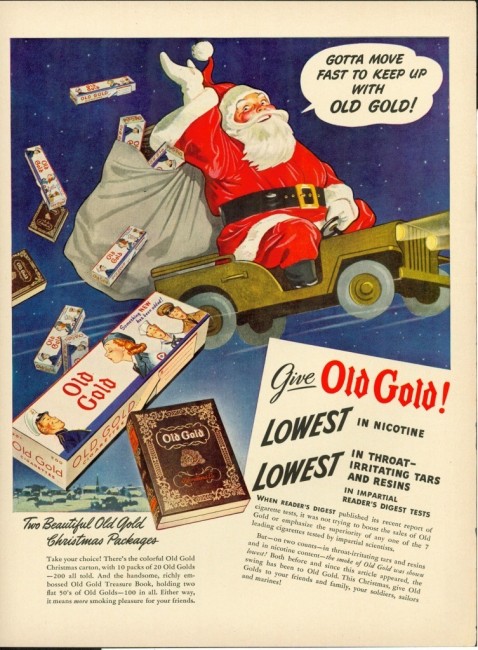
Overprecision
Alias:
Taxonomy: Logical Fallacy > Informal Fallacy > Overprecision5
Quote…
Implausibly precise statistics…are often bogus. Consider a precise number that is well known to generations of parents and doctors: the normal human body temperature of 98.6 degrees Fahrenheit. Recent investigations involving millions of measurements have revealed that this number is wrong; normal human body temperature is actually 98.2 degrees Fahrenheit. The fault, however, lies not with Dr. Wunderlich's original measurements—they were averaged and sensibly rounded to the nearest degree: 37 degrees Celsius. When this temperature was converted to Fahrenheit, however, the rounding was forgotten, and 98.6 was taken to be accurate to the nearest tenth of a degree. Had the original interval between 36.5 degrees Celsius and 37.5 degrees Celsius been translated, the equivalent Fahrenheit temperatures would have ranged from 97.7 degrees to 99.5 degrees.6
…Unquote
Example:

Sometimes [a] big ado is made about a difference that is mathematically real and demonstrable but so tiny as to have no importance. … A case in point is the hullabaloo over practically nothing that was raised so effectively, and so profitably, by the Old Gold cigarette people.It started innocently with the editor of the Reader's Digest, who smokes cigarettes but takes a dim view of them all the same. His magazine went to work and had a battery of laboratory folk analyze the smoke from several brands of cigarettes. The magazine published the results, giving the nicotine and whatnot content of the smoke by brands. The conclusion stated by the magazine and borne out in its detailed figures was that all the brands were virtually identical and that it didn't make any difference which one you smoked. …
But somebody spotted something. In the lists of almost identical amounts of poisons, one cigarette had to be at the bottom, and the one was Old Gold. …[B]ig advertisements appeared in newspapers at once in the biggest type at hand. The headlines and the copy simply said that of all cigarettes tested by this great national magazine Old Gold had the least of these undesirable things in its smoke.7
Exposition:
This fallacy involves treating imprecise information as more precise than it is. When imprecise claims contained in the premisses must be taken as precise in order to support the conclusion, the argument commits the fallacy of overprecision.
Exposure:
- One of the most common occasions for overprecision in the news media is reporting on public opinion polls. During every election, there are news stories claiming that one candidate is ahead of another based upon poll results. However, in the small print of most polls you will notice that the polling numbers have a margin of error (MoE), usually of plus-or-minus three percentage points in national polls. The MoE is a way for the pollster to quantify the level of precision of the poll. All public opinion polls are based on a sample of the population, which is usually about a thousand people for a national poll. No poll is perfectly precise, and treating the results of a poll as if it were is a common form of overprecision. For this reason, when evaluating poll results, it's important to take into consideration the MoE: most polls are imprecise enough that differences of a few percentage points are meaningless.8
- One common effect of overly-precise numbers is that they impress people as scientific. Many people are intimidated by math, and it is easy to awe them with meaningless numbers. Pseudoscientists use overprecision to create a bogus impression of science, whereas genuine scientists avoid overstating the precision of their results. So, overly precise numbers are not a mark of science, but of pseudoscience and should lend less, not more, credibility to claims.
Q&A:
Q: I think I experience a version of this fallacy in the readings of GPS instruments. Without a lot of very complex measurements and translations the GPS signal is (for me as non-military user) never better than, say, 8 to 15 meters accurate. However, usually my GPS instrument will give me a position in millimeters or better. Is this a form of fake precision or is it just a matter of significant numbers?―Eric Dullaart
A: This is an example of what I call a logical boobytrap, which is not itself a fallacy―since it's not even an argument―but which could cause someone to commit one. Luckily, you are not likely to do so, since you know about the instrument's accuracy from experience. However, someone who did not know that the instrument was only accurate at the level of meters, and certainly not to the millimeter, might be misled by it. I don't know why the makers of such instruments would have them give positions in millimeters if they're not that accurate; perhaps such spurious accuracy is supposed to be a selling point. Another possibility is that it is a mathematical artefact of the way that the instrument calculates position; in other words, the explanation may be similar to that given by Paulos in the "Quote-Unquote" above, that is, the excess precision may be introduced by some mathematical operation. In any case, the manufacturers should at least warn users that the instruments are not precise to the millimeter.
Analysis of the Example:
Here is some historical background of the ad:
In…P. Lorillard Co. v. FTC, the company was charged by the FTC with making a distorted use of a Reader's Digest article that discussed the harmful effects of various brands of cigarettes. A laboratory had concluded that no particular brand of cigarettes was substantially more harmful than any other. A table of variations in brand characteristics was inserted in the article to show the insignificance of the differences that existed in the tar and nicotine content of the smoke produced by the various brands. The table indicated that Old Golds had less nicotine and tars, although the difference was so small as to be insignificant. Lorillard launched a national advertising campaign stressing that the Reader's Digest test proved that its brand was "lowest in nicotine and tars," and defended its advertising before the FTC on the ground that it had truthfully reported what had been stated in the article. In a 1950 decision, the Fourth Circuit Court of Appeals, upholding the commission's cease-and-desist order, declared that Lorillard's advertising violated the FTC Act because, by printing only a small part of the article, it created an entirely false and misleading impression. "To tell less than the whole truth is a well-known method of deception," the court ruled.9
In order for the fact that Old Gold cigarettes had the lowest tar and nicotine of the tested brands to be a good reason to smoke them instead of the others, the difference between Old Gold and the other cigarettes needed to be significant. However, this was not the case, so the argument contained in the ads committed the fallacy of overprecision.
Reader Response:
David Fox sent in the following comment about the sign at the top of the entry:
This was merely a transcription from pre-Euro law when the fine was £1,000 and it is simply a literal conversion to the new currency. This kind of thing was not untypical in the early years of the Euro c. 20 years ago before National legislators caught up with the financial system and modified rules and fines accordingly. But I do agree it looks like overprecision.10
Notes:
- T. Edward Damer, Attacking Faulty Reasoning: A Practical Guide to Fallacy-Free Arguments (Third Edition, 1995), pp. 120-122.
- Madsen Pirie, How to Win Every Argument: The Use and Abuse of Logic (2013).
- David Hackett Fischer, Historians' Fallacies: Toward a Logic of Historical Thought (Harper & Row, 1970), pp. 61-62.
- Stephen K. Campbell, Flaws and Fallacies in Statistical Thinking (1974), pp. 21-2 & 27.
- W. Ward Fearnside & William B. Holther, Fallacy: The Counterfeit of Argument (1959), pp. 65-8. Fearnside & Holther do not discuss numerical overprecision, but are concerned with a misguided attempt to eliminate all imprecision in language, which seems more a philosophical than a logical mistake. Nevertheless, I borrow their term for this fallacy as I think it the most accurate, as excess precision is usually neither "false" nor "fake". "Misplaced precision" suggests that the precision is fine, it should just be put someplace else. "Spurious accuracy" is unspuriously accurate, but both longer and less understandable than "overprecision".
- John Allen Paulos, A Mathematician Reads the Newspaper (Anchor, 1995), p. 139.
- Darrell Huff, How to Lie With Statistics (W.W. Norton, 1954), Chapter 4: "Much Ado about Practically Nothing", pp. 58-59.
- For a more detailed explanation of this point, see: How to Read a Poll: Margin of Error Errors.
- Susan Wagner, Cigarette Country: Tobacco in American History (1971), pp. 72-73.
- David Fox, e-mail, 8/27/2022. The sign itself is from: "Sign Language: week 73", Telegraph, 11/4/2009.
Revised: 8/27/2022